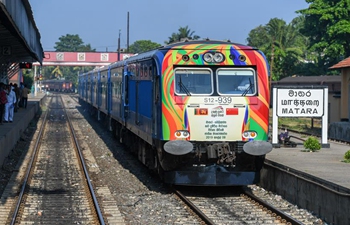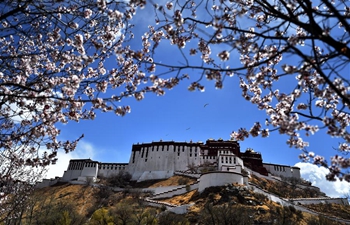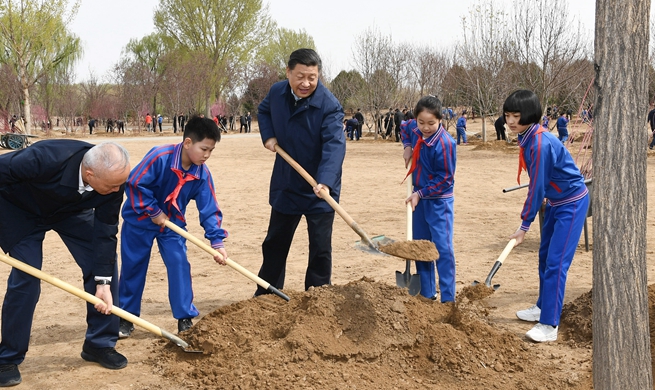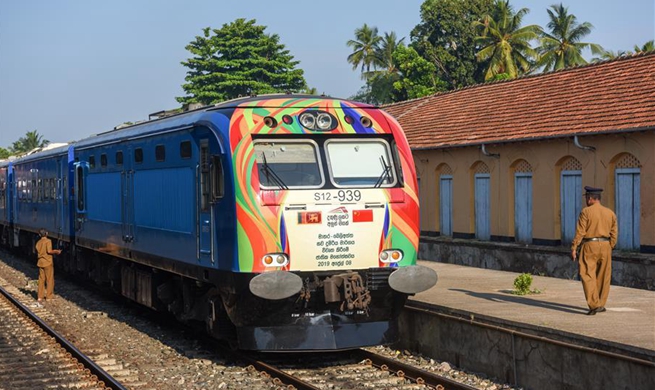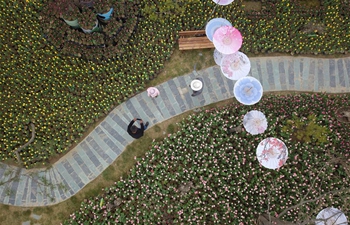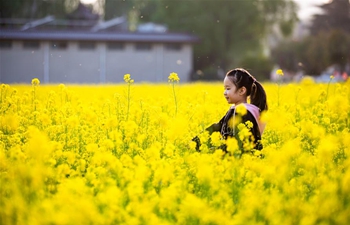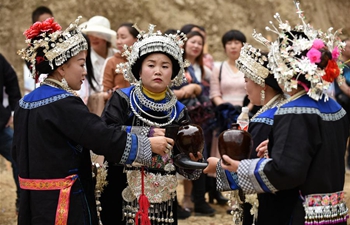VIENTIANE, April 9 (Xinhua) -- A group of 1,000 Chinese tourists, organized by the Chinese and Lao governments, is visiting Laos, to promote Visit China-Laos Year 2019.
The group, organized by Chinese Ministry of Culture and Tourism, Chinese Embassy in Laos and Lao Ministry of Information, Culture and Tourism, is currently visiting tourist attractions in Vientiane and some of the Lao provinces during their stay in Laos till Tuesday.
The tourists from Beijing, Shanghai and other provinces arrived in Laos from Friday to Sunday and welcomed by Lao minister of Information, Culture and Tourism at the airport.
Bosengkham Vongdara said that the group was the first officially-arranged Chinese tour group to visit Laos as part of this tourism promotion. Participants from both Laos and China gained a deeper insight into each other's culture through a series of performances.
"Chinese Stye 2019 -- Special Exhibition of Chinese Contemporary Artists' Painting and Calligraphy" was jointly held Monday by the two countries' tourism authorities in Lao National Museum in Vientiane, as to introduce Chinese traditional culture to Lao people.
During their stay in Laos, travel agents from both countries held a seminar to discuss pragmatic cooperation potentials.
Bosengkham said the governments of Laos and China hoped to attract a large number of Chinese visitors to Laos this year while encouraging Lao people to visit China. In a bid to attract Chinese visitors, the Lao government has reduced the tourist visa fee for Chinese nationals from 20 U.S. dollars to 10 dollars.
Laos recorded more than 4.1 million foreign visitors in 2018, an increase of 8.2 percent compared with 2017. More than 800,000 tourists came from China in 2018, an increase of 26 percent compared to 2017.
This year, the government projected that more than one million Chinese will visit Laos and hopes to attract about 4.5 million visitors in total.
The Visit China-Laos Year 2019 was launched on Jan. 25, in Vientiane. Based on the working plan, Chinese Ministry of Culture and Tourism and Lao Ministry of Information, Culture and Tourism will sign cooperation agreements and organize projects throughout the year, such as tourism promotion, forums, cultural performances and food introduction.
In addition, both ministries will set up dialogue platforms for tourism authorities and enterprises of the two countries, jointly design tourist routes, promote tourism brands of Laos and increase two-way tourist arrivals.
